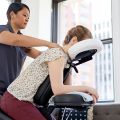6 Ways to Get Constipation Relief

Most healthy persons have bowel motions three times per day or three times per week. Constipation is defined as bowel motions that occur less frequently than usual, or when the stool is firm, dry, and difficult to pass. Although constipation is a frequent ailment, it is nonetheless unpleasant and distressing when it occurs.
The good news is that most people with mild constipation can get relief from at-home remedies such as diet adjustments, hydration, or the proper use of laxatives. Here are the six best methods for getting constipation pain relief:
1. Fiber supplements
Because dietary fiber has numerous health benefits, you should consume as much of it as possible through meals. However, only approximately 5% of the US population consumes the required amount of dietary fiber.
Fiber pills are a practical solution for people who do not get enough fiber from their diet to complement a low-fiber diet. Metamucil, All-Bran, and Citrucel are among the most popular fiber supplements.
Fiber supplements include different active components. Metamucil's active ingredient is psyllium, a soluble fiber. Citrucel's active ingredient, methylcellulose, is also a soluble fiber. However, All-Bran's active ingredient is wheat bran, an insoluble fiber.
Fiber supplements are one of the healthiest ways to improve regular bowel movements, but they work slowly and can produce gas and bloating. Drink plenty of fluids while taking supplements.
Because there are so many various types of fiber supplements to select from, some of which provide additional health advantages, you should consult with your doctor about which one is suitable for you.
2. Hydration
Keeping hydrated is a key step towards constipation relief. Water, other liquids, and high-water diets can improve fiber function, making stool softer and easier to pass.
Good fluid options include:
- Water
- Vegetable juices
- Naturally sweetened fruit juices
- Clear soups
Staying hydrated benefits your overall health and might help you prevent becoming constipated in the first place. How much water you must drink? Most adults require approximately four to six cups of plain water per day. However, it may surprise you to hear that the optimal water intake is an individual quantity.
3. Osmotic laxatives
The name may sound sci-fi, but osmotic laxatives are a type of medicine that includes products you might be acquainted with, such as milk of magnesia.
These laxatives use natural salts, magnesium salts, or undigested carbohydrates to draw water into the large intestine, softening and loosening the stools. MiraLax is another type of osmotic laxative.
4. Stool softeners
Stool softeners provide moisture to the stool, making it softer and easier to pass. Docusate is one type of stool softener.
Stool softeners are frequently prescribed for those who should avoid straining, such as those who have hemorrhoids or have recently had abdominal surgery.
5. Lubricants
Lubricants, such as mineral oil, make stools slip out more easily. They may be a useful option if your stools become trapped low in your bowels if you have an internal tear or "fissure," or if you experience pain from hemorrhoids during bowel movements. Mineral oil is taken orally and can induce pneumonia if inhaled into the lungs.
6. Stimulant laxatives
Stimulant laxatives treat constipation by stimulating the intestines to contract more frequently or strongly, allowing feces to pass through the colon. More aggressive stimulant laxatives include senna, cascara, and bisacodyl. These medications may help relieve severe constipation that hasn't responded to other therapies.
Stimulant laxatives should only be taken as indicated and for short periods due to negative effects and the risk of the large intestine becoming dependent on them.
Stimulant laxatives can be administered orally or placed into the rectum as a suppository. When used as a suppository, they can be effective in 15-60 minutes. But when used orally - can cause a bowel movement within 6 to 8 hours.
When to call your doctor
If self-care remedies do not work, consult your doctor for constipation relief. Your doctor may recommend medication to relieve your constipation.
If you have a fecal impaction (a huge lump of dry, hard stool that remains lodged in the rectum), a doctor or nurse may have to remove the hard stool with a lubricated, gloved finger put into the rectum. This operation can be uncomfortable, so a topical anesthetic is commonly used. Some folks may need to be sedated.
Typically, an enema is administered after the hard stool has been evacuated. To promote regular bowel movements, a high-fiber diet, stool-softening medicine, or laxatives may be prescribed.
Other articles and publications:
Articles and publications of other companies:
- +1 (646) 270-9836
- Long Island City
- grantny.com













